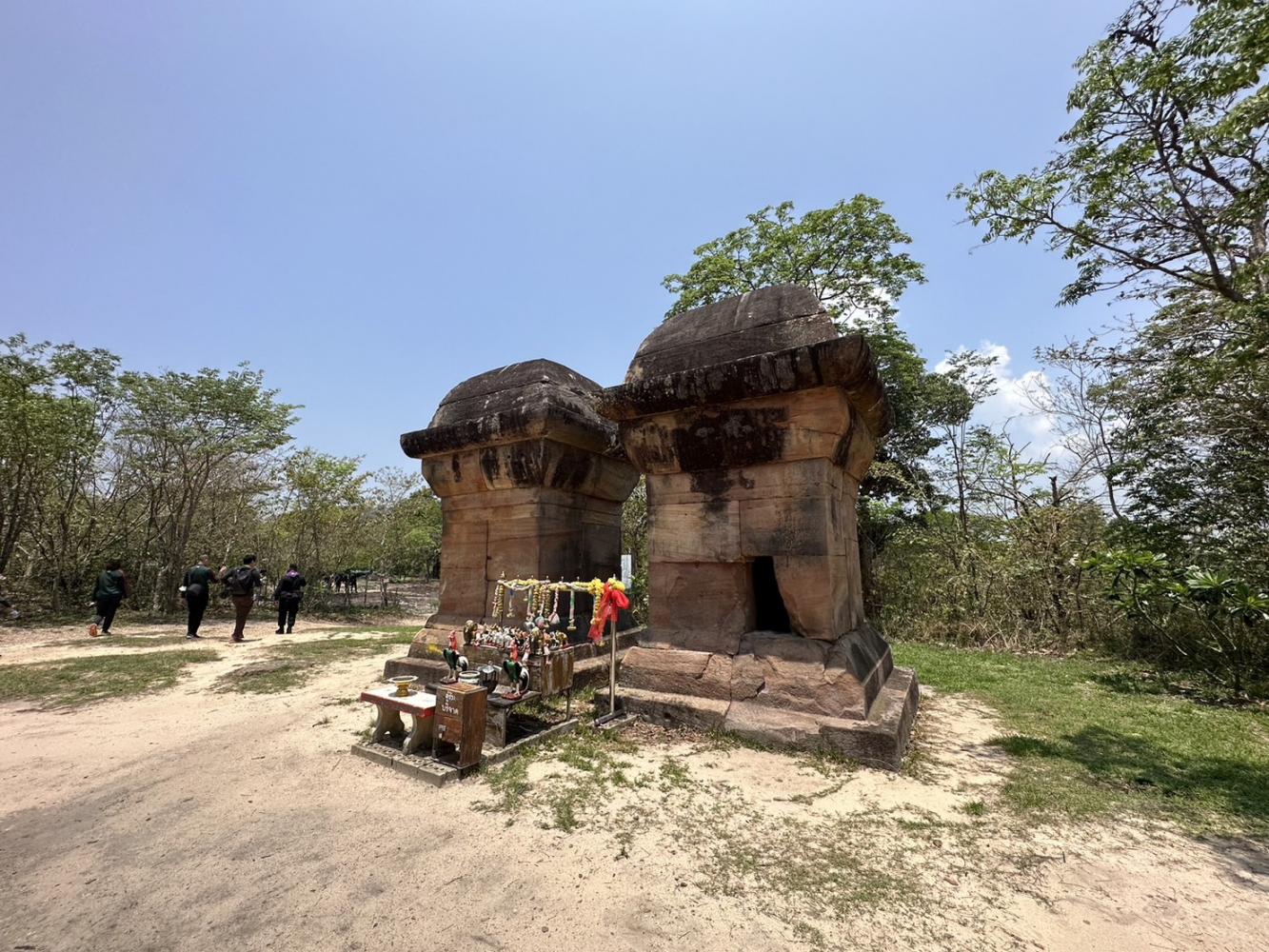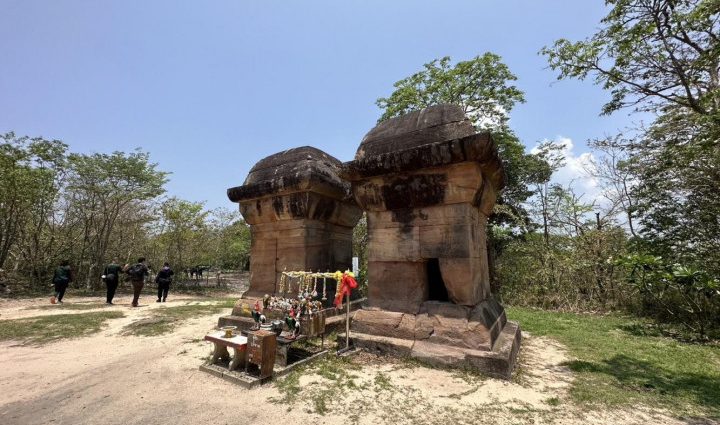
Thais are eagerly awaiting the reopening of the Preah Vihear temple ruins in Si Sa Ket, after 15 years of suspension, to promote tourism and a peace dialogue with Cambodia.
Due to border conflicts in the area over territory claimed by both countries, access to the temple from Si Sa Ket’s Kantharalak district has been blocked since 2008.
Thousands of soldiers from both countries are still stationed along the border in Si Sa Ket, Ubon Ratchathani and Surin. The patrols are deployed every 10–15 metres, compared to the overlapping stations which had triggered confrontation in 2011.
In 2013, the International Court of Justice (ICJ) demanded both parties withdraw the armed detachment stationed in front of the temple ruins on the Cambodian side. However, the court’s decision allowed Thailand and Cambodia to deploy border patrol forces on the outer frontiers.
Even though the ICJ’s resolution said Thailand and Cambodia should seek a joint agreement to mutually develop areas in and around the Preah Vihear temple, there has been no improvement since the ceasefire in 2011.
Once a popular tourist spot, Cambodia has thwarted access to the Preah Vihear temple ruins from Thailand’s territory for over a decade.
A local source said there had been many attempts from Thailand to join hands with Cambodia in reopening tourism around the temple’s complex.
For example, one Ubon Ratchathani governor province had asked Cambodia to allow tourists to enter Preah Vihear temple via the Si Sa Ket entrance.
The request was rejected outright under the pretext that only Prime Minister Hun Sen is authorised to decide.
Being under military control for 12 years, Cambodia and Thailand have agreed to halt armed responses against each other.
Nonetheless, the Thai army has never revealed the actual number of deployed officers on the frontline, citing security reasons.
The source said the personnel are from Ranger Forces Regiment 2307, Border Patrol Police Division 22 and 12th Infantry Regiment.
Col Boonserm Boonbamrung, commander of Suranaree Task Force’s 1st special unit, said both Thai and Cambodian soldiers are still deployed in the area surrounding the Preah Vihear temple’s areas, governed by the “5+5 Policy”.
The policy says there must be five officers from Thailand and five from Cambodia stationed at the frontier’s coordination point to help translate and coordinate their moves, avoiding misunderstanding.
“If there is gunfire on one side, the other must not fire back in defence. They must inquire first if the gunfire was accidental or caused by other factors,” said Col Boonserm.
Placing their military forces next to each other, many have feared the proximity might trigger a confrontation.
A source said many of the soldiers are Cambodian-speaking men while many Cambodian officers are capable of speaking Thai.
Apart from guarding their country’s borders, both Thai and Cambodian soldiers in the area have spent their time enjoying hobbies together, such as playing volleyball, rattan ball and petanque.
Many socialise over dinner and their supervisors also keep in contact, said Col Boonsom.
Lt Gen Sawarat Saengphon, Commander of the 2nd Army Region, said Cambodian military leaders had told him that both neighbouring countries might have to tolerate the situation as long as the territory claim is unsettled.
Many locals from Cambodia and Thailand had encroached on the disputed area many times. Lt Gen Sawarat said officers have tried to negotiate and send them away from the area.
“To keep the peace, [soldiers] must be stationed at the same spots. No encroachment; no troop advancement. We must keep to our designated spots which were assigned in 2011,” he said.
Cambodian forces have been stationed at Phu Ma Khua, west of Preah Vihear temple, since the clashes in 2011.
Meanwhile, Thai soldiers withdrew and kept their distance 50 metres away from the nearest military post.
However, taskforces from both sides withdrew from the ancient ruins of Prasat Ta Krabey and Prasat Ta Muen temples in 2011.
They are occupying the areas by half until the territorial dispute is resolved.
Recently on May 18, border security forces from Thailand, Cambodia and Laos organised a sports event at Ubon Ratchathani Rajabhat University to enhance military relations between the three countries.
Each country sent 60 athletes to compete. The event was joined by Lt Gen Chea Sopheak, deputy chief of Cambodia’s 4th military region, and Lt Gen Thol Suvan, deputy chief of Cambodia’s 3rd military region, the taskforces overseeing the Preah Vihear temple’s area.
Some believe the two generals are likely to be promoted to take charge of the region, as the current incumbents in those roles are nearing retirement.
A source said Cambodia would reshuffle its military organisation in the Preah Vihear temple area, a new approach endorsed by the son of Cambodian Prime Minister Hun Sen, Lt Gen Hun Manet.
The source said that a promising solution to ease the border conflict between Thailand and Cambodia is to allow tourists to access the Preah Vihear temple on Si Sa Ket’s ground and to allow tourists from Cambodia to enter Pha Mor E-Daeng in Khao Phra Viharn National Park.
“If Cambodia allows access to the temple from Thailand’s side, it would benefit tourists and attract more people to visit. [Thailand and Cambodia] should join hands to promote tourism,” the source added.
It is expected that Lt Gen Hun Manet would resolve the land dispute around Preah Vihear temple which could lead to a permanent military withdrawal and sustainable tourism in the future.
The Preah Vihear temple was built on a cliff in the 9th century and completed in the 11th century as a dedication to the Hindu God Shiva.
The site was listed as a Unesco World Heritage site in 2008.
Pha Mor E-Daeng, located on top of Khao Phra Viharn National Park in Si Sa Ket province on the Thai side, was once an entrance to the ancient ruins but the gate has been closed since 2008.
The ICJ said Cambodia and Thailand, as parties to the World Heritage Convention, must work together to protect it as a world heritage site. It urged them to find a joint solution to the disputed area.

